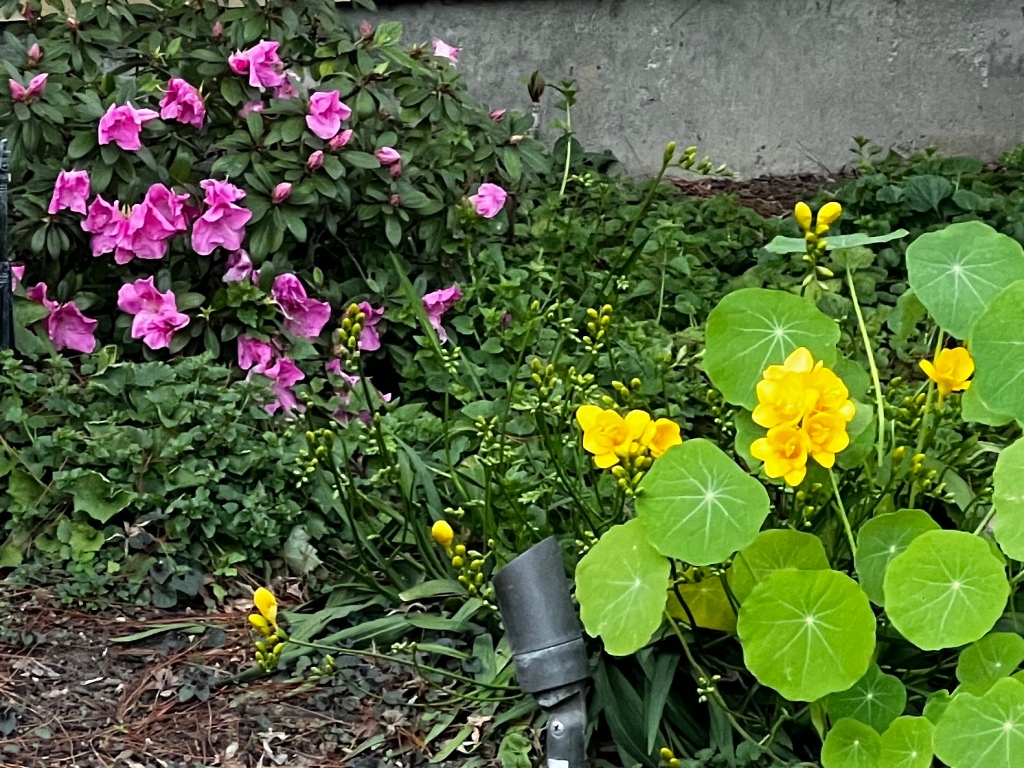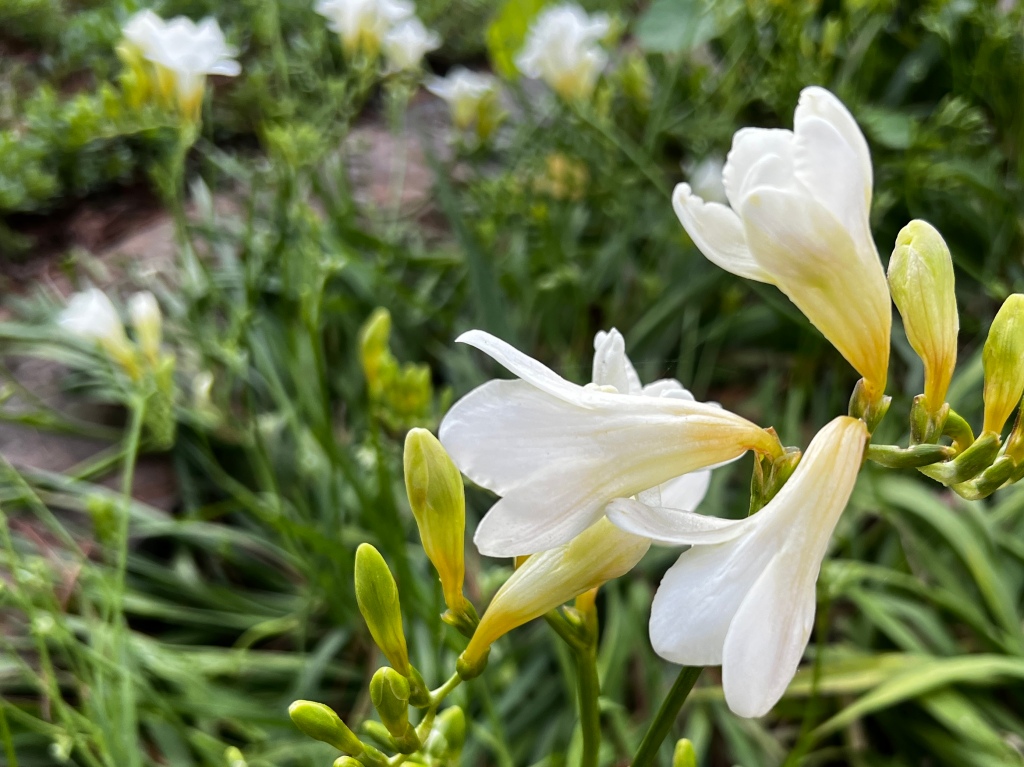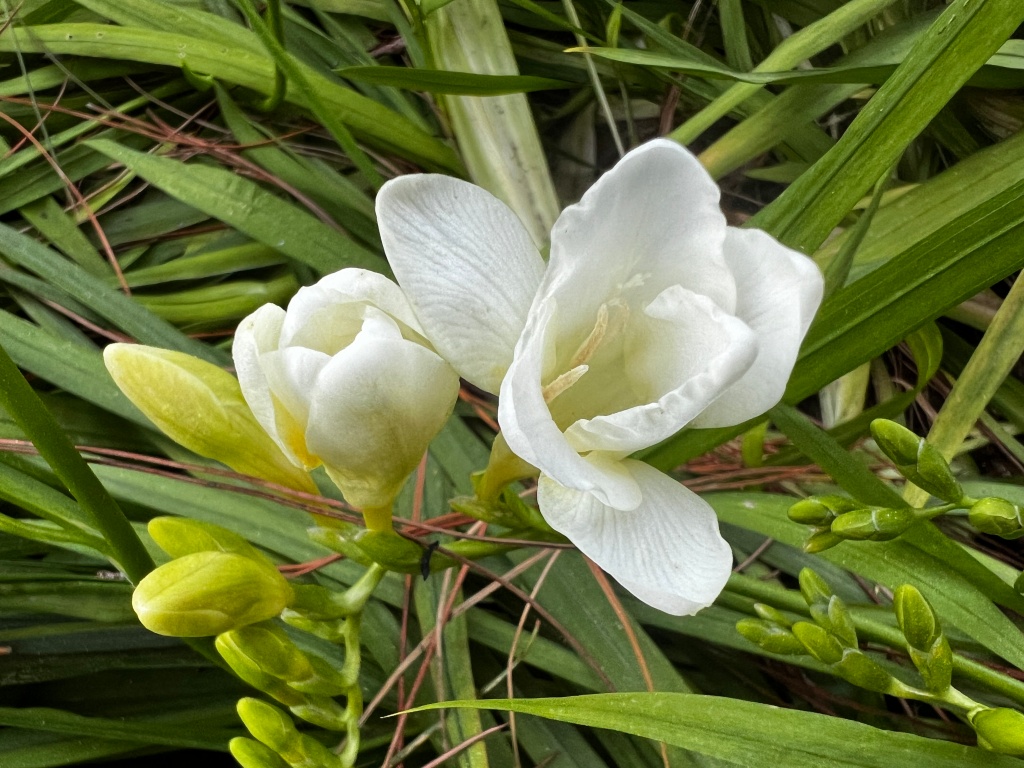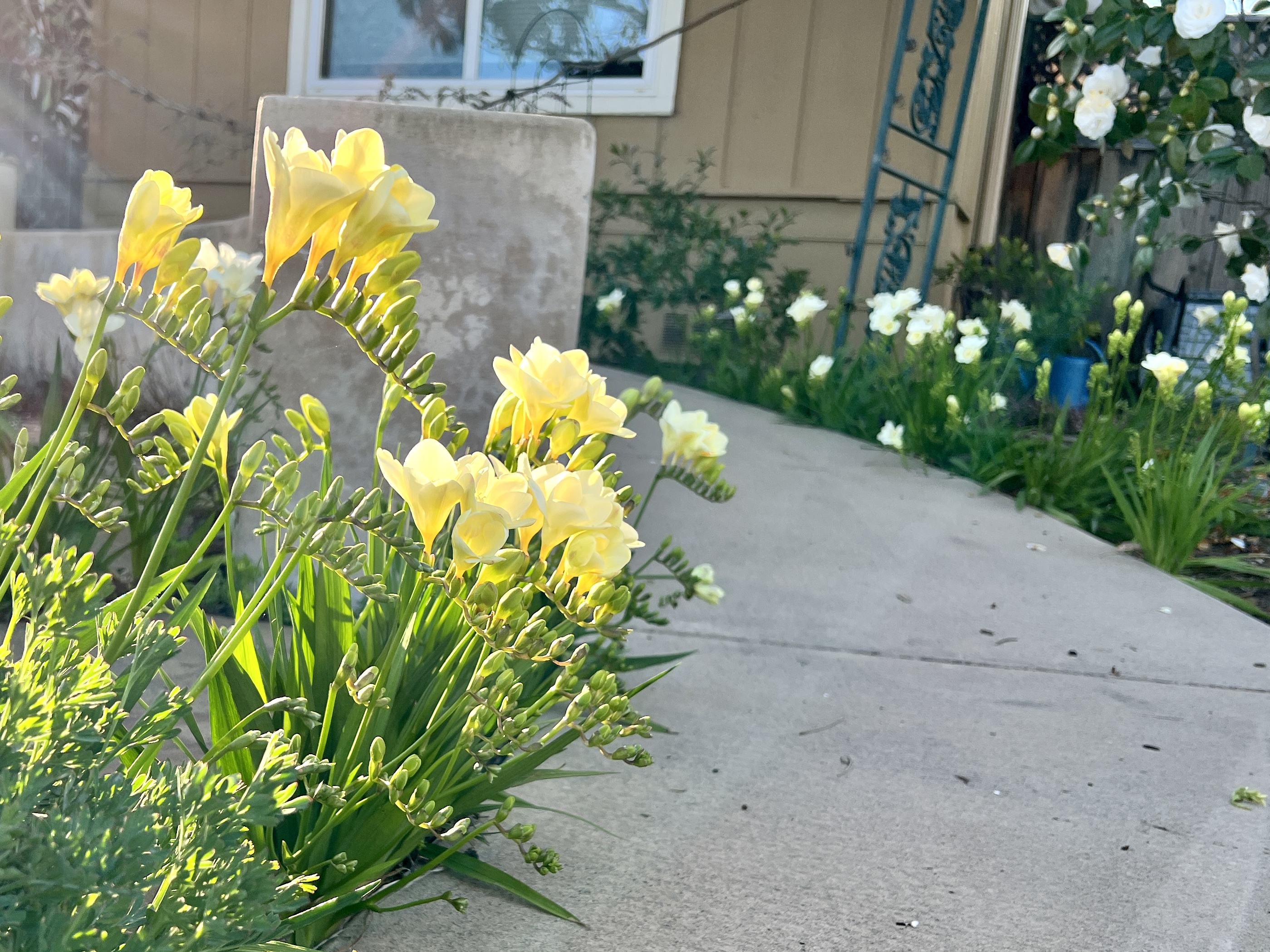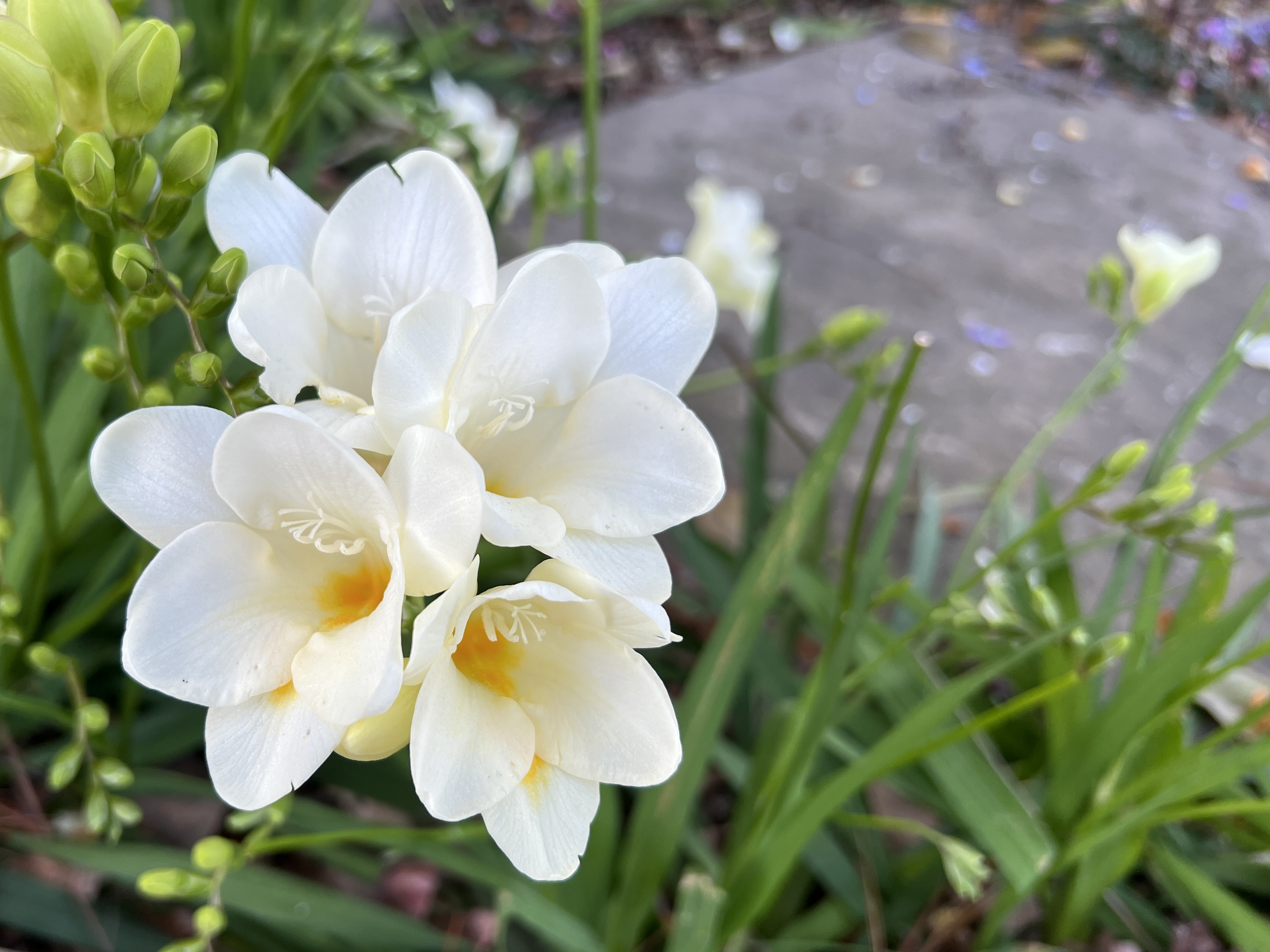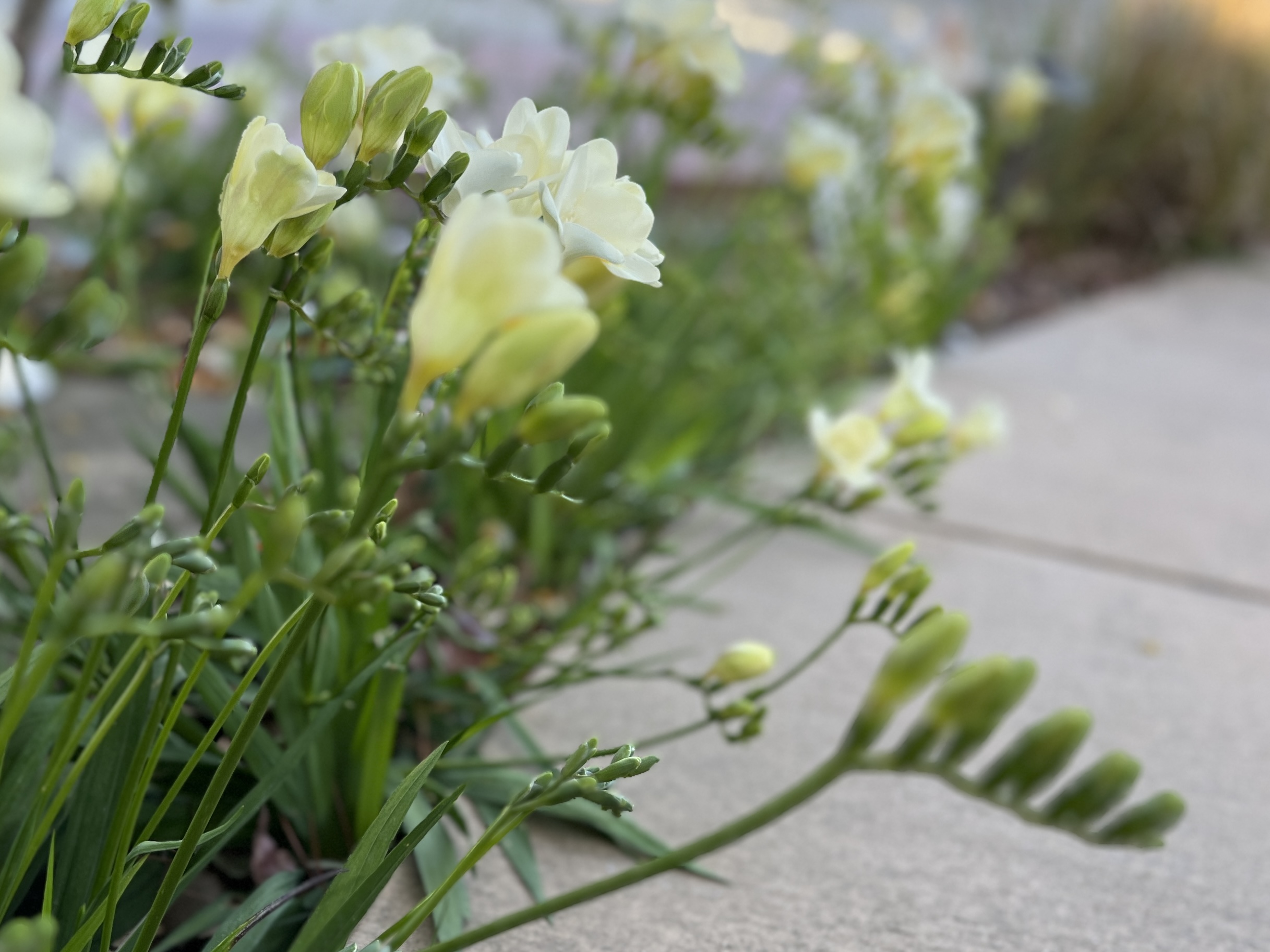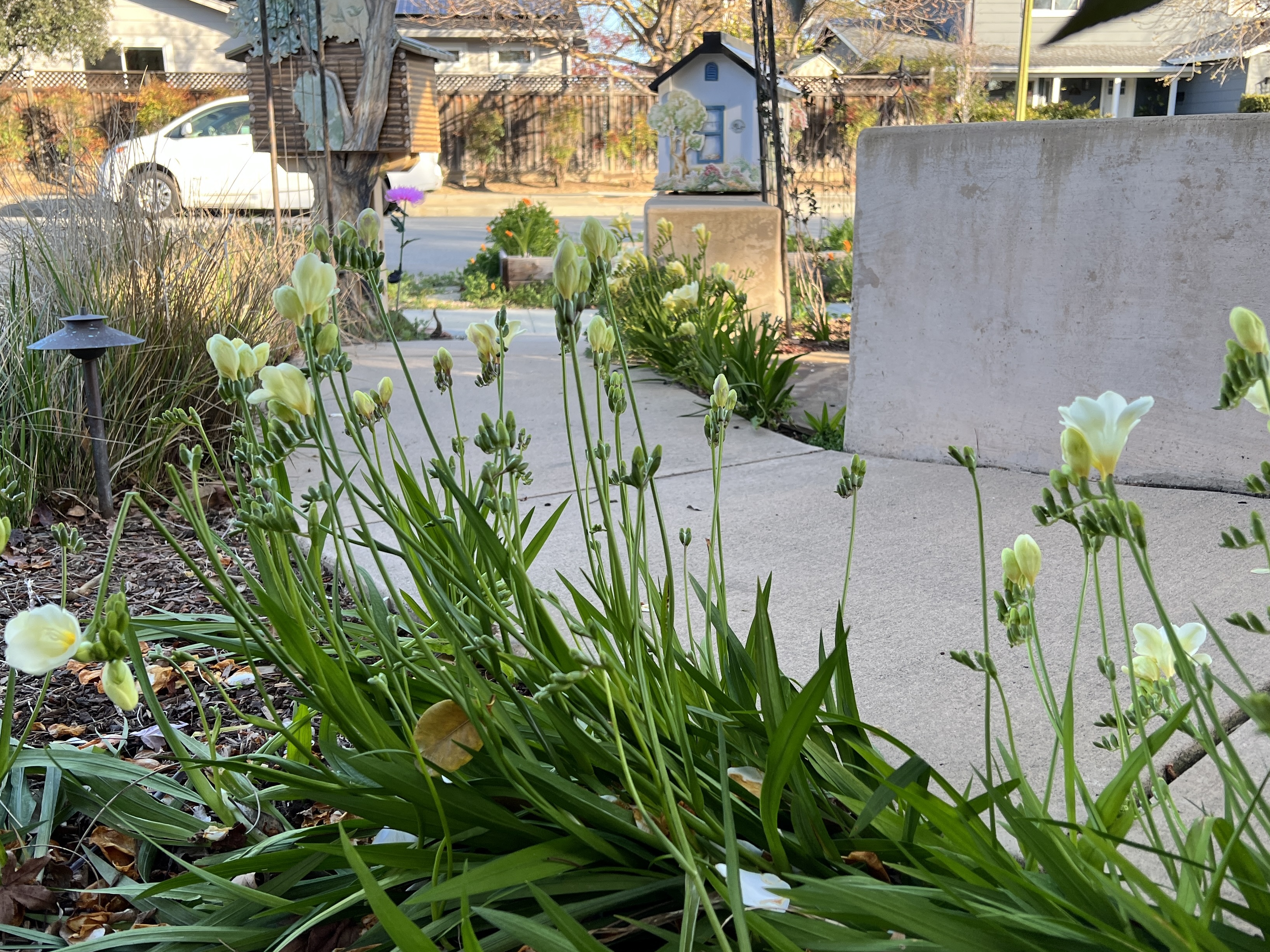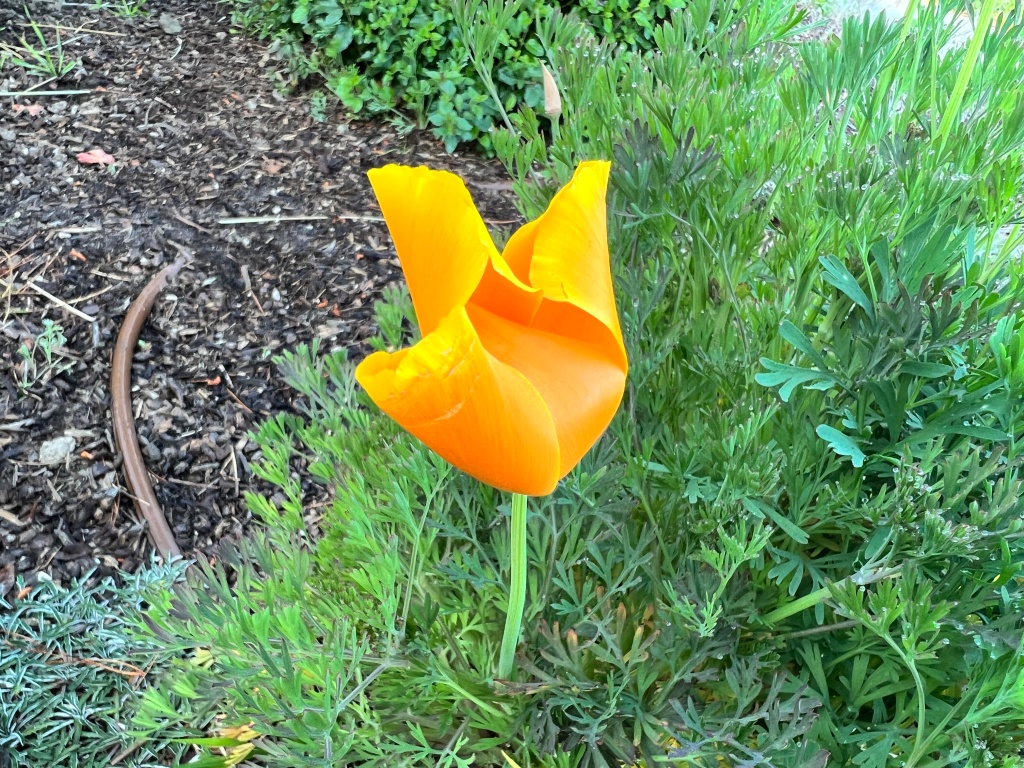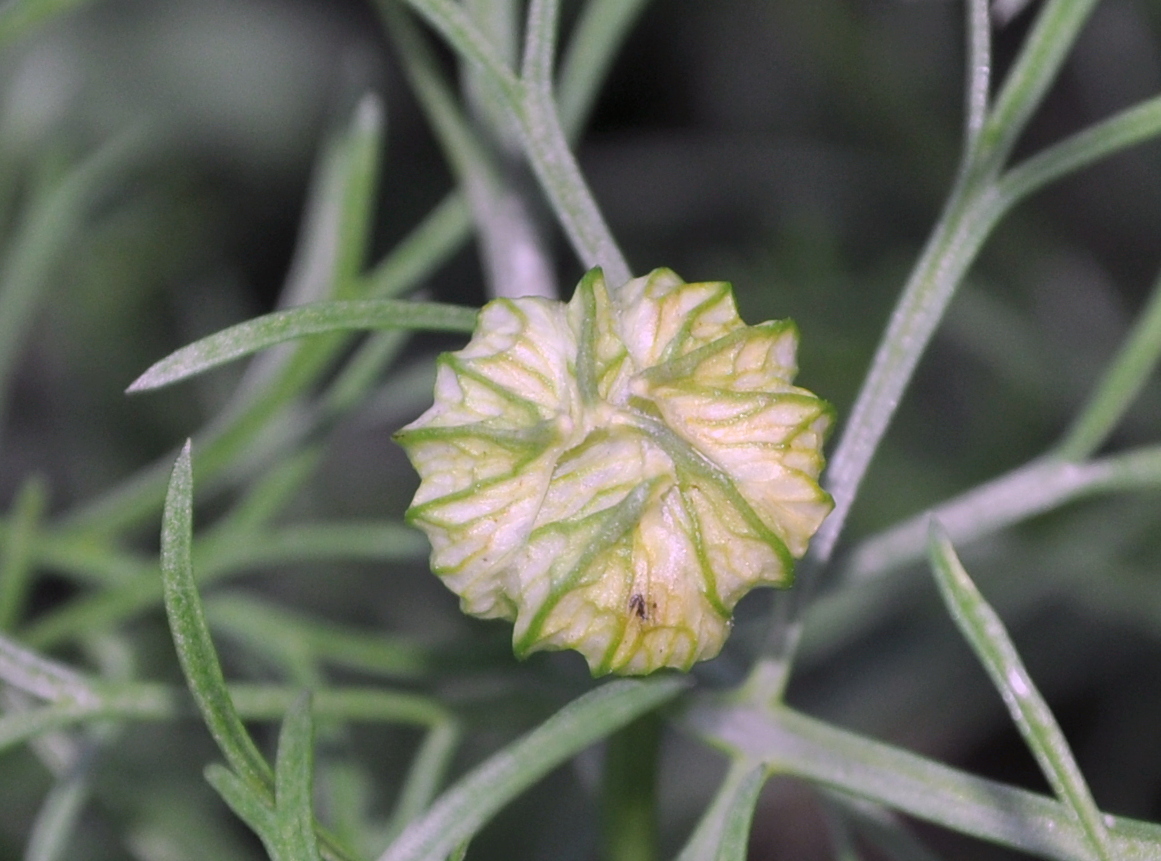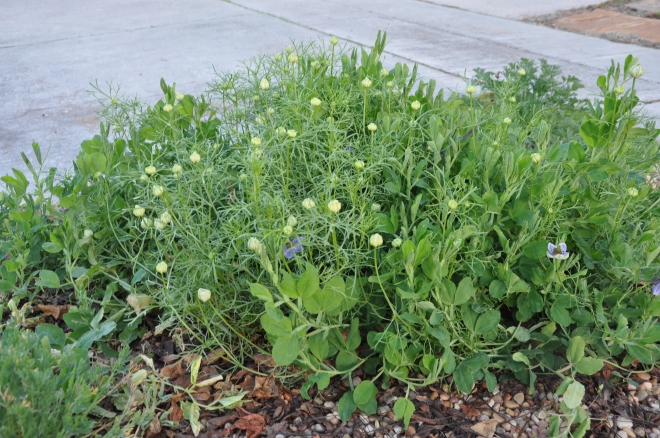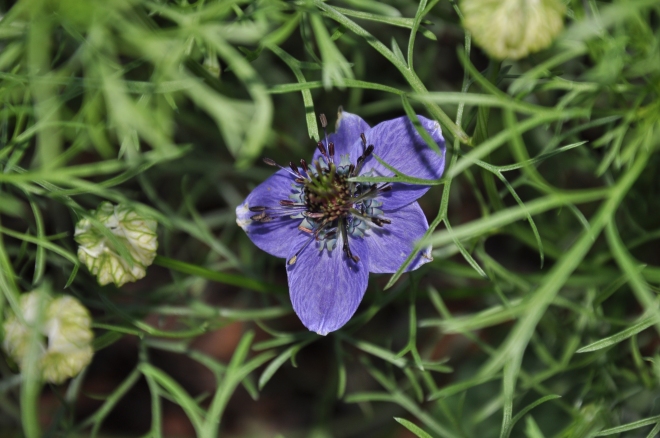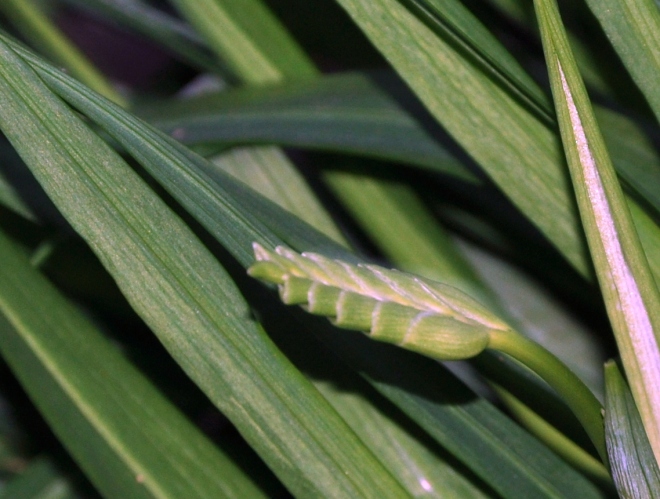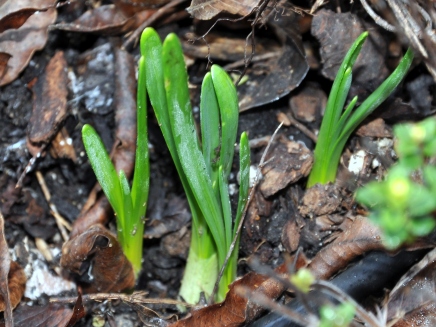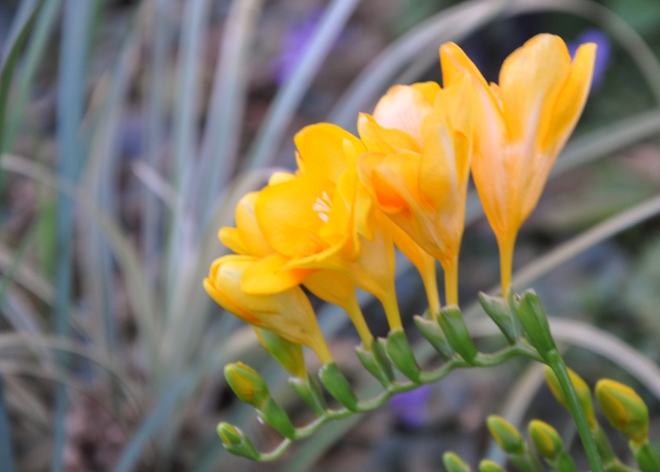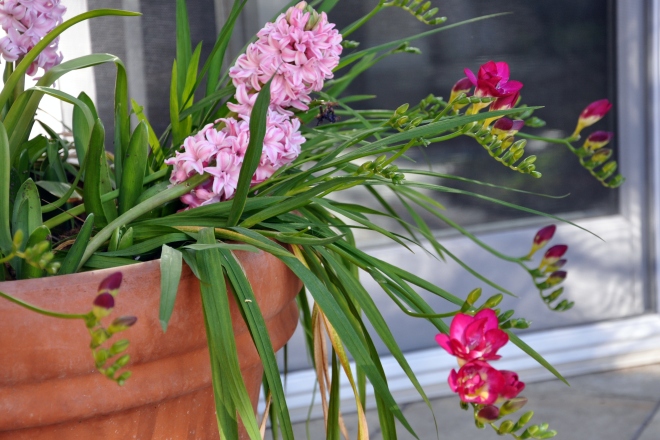Time may be a social construct, but Spring arrives reliably year after year. Paper calendars are optional.

Welcome rain for a parched garden
The first bulbs emerge in February, a little pre-season treat. In our garden, that means hyacinth and once-upon-a-time, crocus. I haven’t noticed the crocus in recent years, but given their small size, they may simply be growing out of view.

Pink hyacinth
Soon the narcissus follows, bright and showy and strong.

Harbingers of spring: Yellow Daffodils
Freesias are my new favorite. They multiply year after year, adorning the garden with an assortment of color and an intoxicating scent. I planted one assorted packet several years ago, and have reaped the reward of purples, reds, pale yellows, and the prolific whites. They dazzle our passersby from the curb garden and along the curving ramp to our front door.

A trio of colored Freesia

Brilliant white Freesia
As the flashy bulbs finish for the season, perennials carry on with the show. Bright pinks, lavenders, and yellows contrast against the ever-present greens.
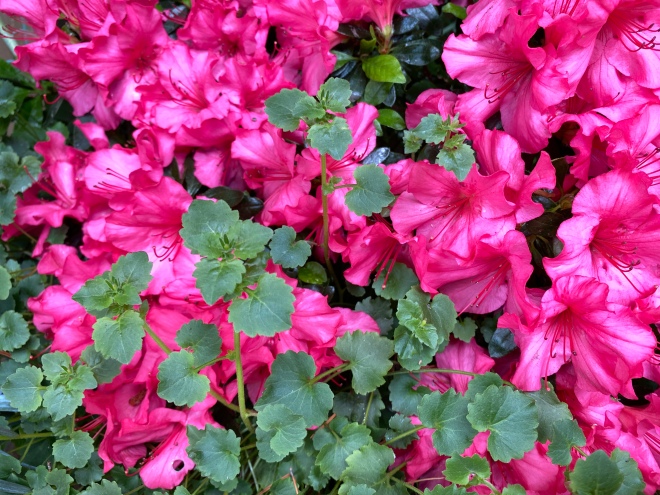
Dark pink azalea

Azalea close-up
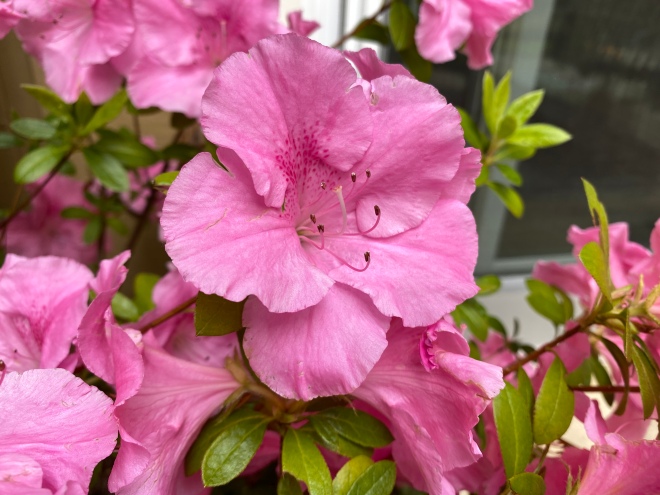
Pale pink Azalea
Shiny new growth emerges on all the plants like a chick from an egg, small and tender at first, then vital and strong.

It’s not all fun and games. The weeds emerge, even with our meager rain, opportunistically growing beneath the established ground cover. They grow parallel to the lacy foliage of the California poppy, perhaps thinking I won’t notice.
They’re no match for this gardener.
As I hobbled to and from the car earlier this year, I would bend down and pluck one or two weeds. Now that I’m fairly mobile, I’m methodically clearing them from the garden.
The worst of the weeds gather near the curb, so I sat on the pavement there and got to work.

California poppies amid the weeds

California poppies, no more weeds

Gardening with an injured foot

Curb garden poppies

An almost weed-free walkway
Over a few weeks, I worked my way down both sides of the drive, around the raised bed known as the curb garden, and then finally into the main garden.

Front Garden
Getting lost in thought as I pull weeds and tidy the beds is wonderfully therapeutic. It helps keep the worrying thoughts at bay. I hear bird song from the trees. I try to count bees, smiling to myself when I lose track. An abundance of bees is essential for our survival. My garden is content to do its part.
Garden Gallery:

Salvia in bloom, a hummingbird favorite

Wisteria along the walkway

Assorted azaleas on the pack steps

Tessa amid the nasturtium and abutilon

Variegated geranium leaves

Osteospermum or African Daisy

Azaleas and succulents on the back steps

Nasturtium

Purple pom-pom flowers
Occasionally a lizard darts out of its hiding place and they always give me a start. They too are a gift to the garden, so as my nervous system relaxes, I count my many blessings and carry on with my day.
To plant a garden is to believe in tomorrow. – Audrey Hepburn

